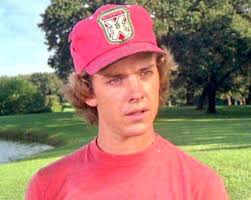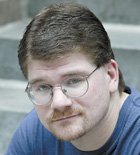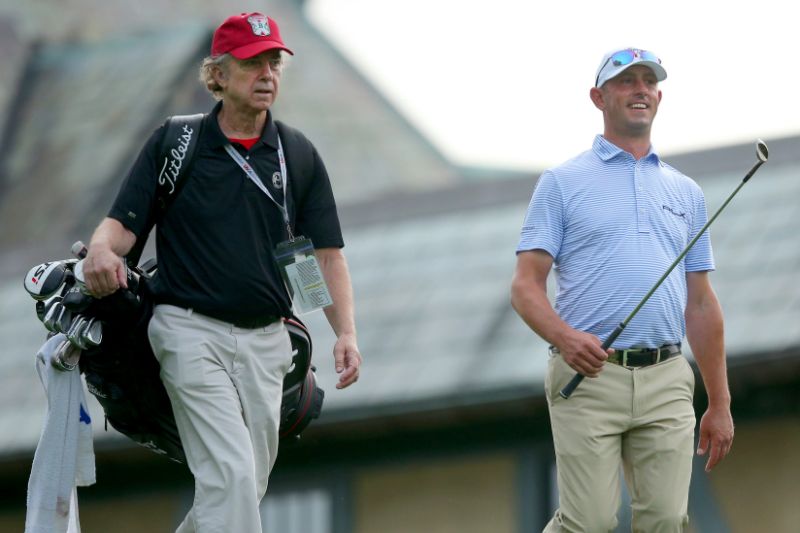When Caddyshack star Michael O’Keefe showed up at the U.S. Open this week, it was just the latest big role played by the Irish at the elite golf tournament.
From the Irish Americans who dominated the Open’s early days, to top 21st Century golfers like Graeme McDowell and Rory McIlroy – both competing this week at Winged Foot in Mamaroneck, New York – the Irish have left nearly as big a mark on the U.S. Open as the Scottish have.
McIlroy was in good position to advance as of Friday afternoon, though McDowell was still fighting to make the cut.
This year marks the 10th anniversary of one of Irish golf’s finest moments, when McDowell – from Portrush, Antrim – nabbed the U.S. Open title at Pebble Beach, California. The following year, in 2011, fellow Northern Ireland native Rory McIlroy won the U.S. Open at Maryland’s Congressional Country Club. They were both following the lead of Pádraig Harrington who won the Open championship in 2007 and 2008.
But Irish-born champions aside, perhaps the fan favorite Irishman at this year’s Open is an Irish American who is roughly twice McIlroy’s age, and serving as caddy for Maryland-born U.S. golfer Danny Balin. That would be the actor Michael O’Keefe.
O’Keefe, of course, starred alongside Chevy Chase, Bill Murray and Rodney Dangerfield in the classic 1980 “slobs vs. snobs” golf movie Caddyshack, which celebrated its 40th anniversary this past summer.

O’Keefe – sporting a Bushwood Country Club hat from Caddyshack – had earlier posted a letter looking to reprise his Caddyshack role for any real-life pro willing to take him on.
“I had caddied at Winged Foot in 1971 and 1972, having grown up only 15 minutes away, in the village of Larchmont,” O’Keefe wrote in a letter posted on Golf.com. “Now, almost a half-century later, I’m ready to take my caddying to the next level. I’m serving notice that I’m available for, interested in and worthy of carrying a bag for any professional (or amateur) in the field at this year’s U.S. Open.”
Danny Balin took the bait, and invited O’Keefe to act as his caddy for the practice rounds. According to the Winged Foot rules, Balin was required to used his own professional caddy for the actual tournament.
Still, O’Keefe was happy with the arrangement, and delighted to be given a chance to do the rounds at the famous course, so close to his home town in Westchester County, New York.
O’Keefe, McIlroy and McDowell are part of an Irish tradition at the U.S. Open that is now more than a century old.
The first official U.S. open golf tournament was a nine-hole affair held at Rhode Island’s Newport Country Club Newport Country Club in 1895. The English and Scottish dominated until 1911, when an Irish mailman’s son out of West Philadelphia High School named Johnny McDermott won the tournament in 1911, at the tender age of 19. McDermott won again the following year, though for some he is best remembered as the clownish character in the 2005 golf movie The Greatest Game. In truth, McDermott spent his later life battling mental illness, which surely affected his athletic performance. A few years back, McDermott was more properly honored with induction into the Philadelphia Sports Hall of Fame.
Atlanta native Bobby Jones became the dominant golfer of the 1920s, though New York Irishman Johnny Farrel topped Jones at the 1928 Open, in a playoff. In 1931, at Inverness Club in Toledo, Ohio, George von Elm lost another playoff, to Connecticut-born Billy Burke – but don’t believe the name. The champ was actually born William Burkauskas.
The next dominant Open performer – who ultimately won four titles in the 40s and 50s – was Irish American Ben Hogan. Not a child of the city like McDermott or Farrell, Hogan was born in Stephenville, Texas – though the family did later move (fittingly) to the central Texas town of Dublin, before settling in Fort Worth. Hogan would go on to win nine so-called “major” tournaments as a pro, and is one of only five golfers to have won all four majors – the Masters, PGA Championships, British Open, and U.S. Open (which Hogan captured in 1948, 1950, 1951, and 1953).
By the time Caddyshack hit theaters in 1980, golf was easy to stereotype as a stuffy pastime for rich elites. In the movie, Danny Noonan is a happy-go-lucky slacker from an Irish Catholic family so large that the father has a little bit of trouble keeping track of just how many kids he has.
Noonan and his Irish girlfriend (who of course has a pregnancy scare) are among the “ethnic” working class at Bushwood Country Club, who serve as foils to the snobby wealthy members. The movie builds to an exciting finale, with Danny able to win a big amateur match – and his detractors shouting “Noonan!” in the hopes that he will blow a crucial putt.
Noonan’s girlfriend in the movie (Sarah Holcomb) has arguably – and this is saying something – the worst Irish accent in movie history. Even worse than her name. Which is pretty bad. (Maggie O’Hooligan.) But the comedy in Caddyshack is based on the real-life experiences of stars Bill Murray and his Chicago Irish American family.
“Part coming-of-age comedy, part class-warfare commentary, Caddyshack was rooted in the teenage experiences of the blue-collar Murray clan,” Chris Nashawaty wrote in his 2018 book “Caddyshack: The Making of a Hollywood Cinderella Story.”
The Murray brothers – Bill, as well as Brian – had “spent their summers thanklessly” working low-wage jobs and catering to rich jerks, at Chicago area country clubs.

O’Keefe seemed to have brought Danny Balin some good luck. After O’Keefe had wrapped up serving as Balin’s caddy, the pro was still shooting a respectable + 3 as of Friday afternoon.
There were no reports that anyone had yelled “Balin!” while he was teeing up.

Tom Deignan is an author, teacher, and columnist for the Irish Voice and Irish America (tdeignan.blogspot.com).


Leave a Reply